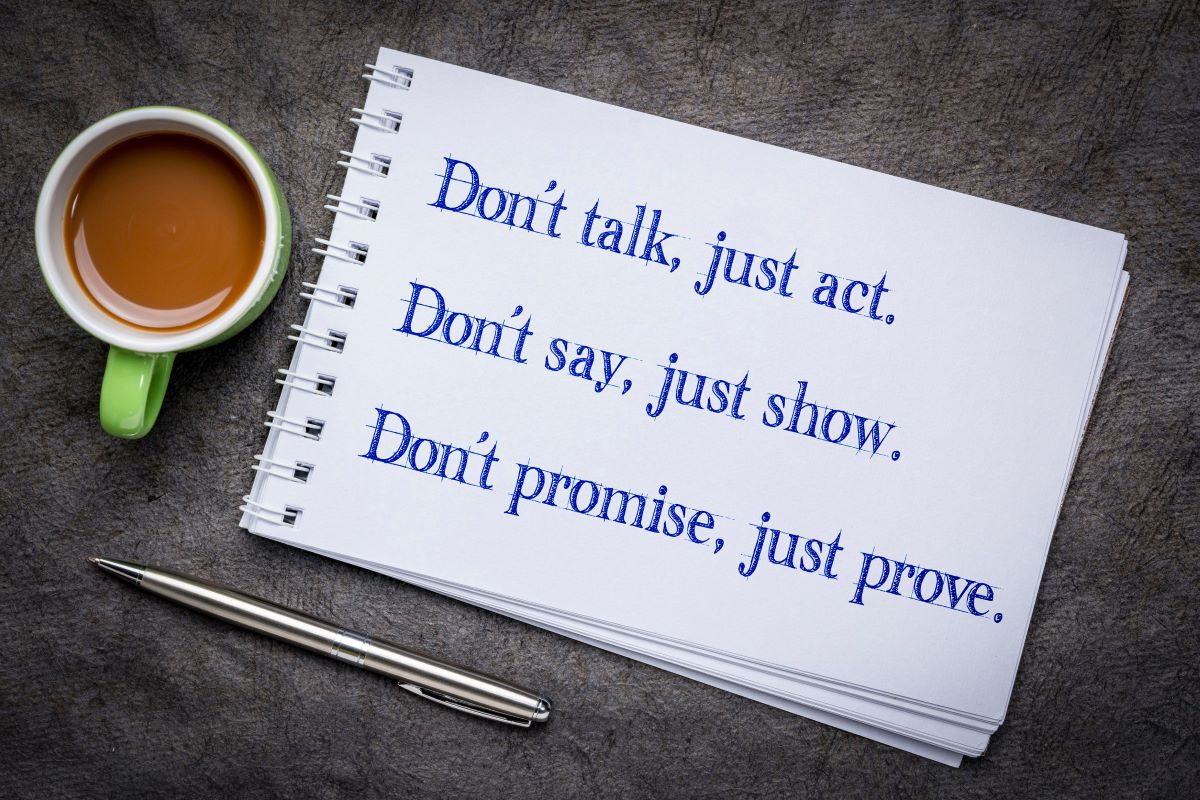48 quick hints to craft better business copy
Add these tips to your storytelling arsenal to make your messaging sparkle and sing.

Editor’s note: We are re-running the top stories of 2021 as part of our year-end countdown.
1. Each time you sit down to write, remind yourself of this sobering fact: “Nobody has to read this.”
2. If you must use the word “sustainable”, don’t add tautology to cliché by pairing it with “long-term”.
3. Making it easy to read isn’t the same as dumbing down. Is an iPad dumb because it’s easy to use?
4. Don’t follow “we’re different because…” with clichés about “adding value” and “innovative solutions.”
5. Important message to convey? Read your work to a colleague, then ask them to repeat its main point.
6. To paraphrase Twain, substitute “damn” every time you want to write “meaningful” or “significant.”
7. For an instant idea of how readable your writing is, use the Gunning Fog Index.
8. Don’t worry about how well you write. It’s how well you edit that makes the difference.
9. Don’t tell people you want to “engage” them. Ask them “what do you think?”
10. Tempted to use the cliché “ultimate”? Your more literal-minded readers will interpret it as “last ever.”
11. Writing quotes for someone else but struggling to capture their voice? Get out that Dictaphone.
12. Is your writing flabby or fit? This free tool tells you what you need to hear: The Writer’s Diet.
13. Force yourself to write every day for an hour. It’s like exercise: The more you do it, the easier it gets.
14. Never write an apology without saying how you plan to fix the problem.
15. It’s impossible to proofread your own work – always enlist a second or third pair of eyes.
16. Avoid emoji in business emails.
17. Pluralizing abbreviations? No apostrophe required: 20 CDs, 12 TVs, etc.
18. Everyday (1 word) = “ordinary.” Every day (2 words) = Monday, Tuesday, Wednesday, Thursday, Friday, Saturday and Sunday.
19. Be yourself when you write. If you found it in a thesaurus, it’s probably the wrong word.
20. If you do decide to use a thesaurus, make it Words That Sell by Richard Bayan.
21. Never start writing without a tight word count. We all need an incentive to use fewer words.
22. Writing for others? Don’t call them “stakeholders.” Your duty’s to your readers, not the person commissioning you.
23. Finding it hard to proofread your work? Get your computer to do it for you!
24. “Don’t use a five-dollar word when a fifty-cent word will do.” – Mark Twain
25. Want to get more clicks on Twitter? Research shows the secret is to use more verbs (action words).
26. Write for human beings, not Google. Google isn’t going to buy your product.
27. Never assume an abbreviation will be understood (www.acronymfinder.com lists 126 definitions for “CRM”).
28. Remember: When it comes to explaining a tricky concept, being an expert is a weakness, not a strength.
29. Explain something well and your reader feels smart. When they feel smart, they like you. When they like you, they’re persuadable.
30. Let it sit for a while before you proofread it. With a bit of distance, you’ll spot more errors.
31. Always proof on paper – you’ll catch more mistakes than when you read your work on screen.
32. Use words that stimulate the five senses. The brain responds as if you’re actually tasting, hearing, seeing, smelling or touching.
33. Boost your creative thinking by setting limits – like writing with only the 1,000 most common words.
34. Instantly spot long sentences with Drivel Defence, a free online tool from the Plain English Campaign.
35. Overlong sentence? Cut through complexity by breaking it up into separate ideas. Use a red pen or carriage returns.
36. Be positive! Research shows feel-good stories that arouse the emotions are the most likely to go viral.
37. Ditch what you learned at school. Yes, an essay should be impersonal and abstract, but the best business writing is human and concrete.
38. Read more to write better.
39. Communicating bad news? Don’t hide behind corpspeak. Everyone knows “rightsizing” means “job cuts.”
40. Don’t fear repetition – it can be extremely powerful. Google Churchill’s “we shall fight on the beaches” speech for an example.
41. Interviewing someone? Avoid questions requiring a yes or no answer. Instead, ask how, what or why.
42. Begin or end with a fragment or short sentence to create emphasis. And drama.
43. It’s OK to break the “rules” of grammar – as long as you understand them and know why you’re breaking them.
44. Stop thinking of your reader as an “audience.” Traditional audiences don’t usually talk back. They do in today’s social media world.
45. Remember, there’s nothing clever about complexity for the sake of it. Clear writing’s a sign of clear thinking.
46. Ruthlessly delete everything that’s not important to your reader (even if it’s important to you or the person who briefed you).
47. Make headers as informative as possible. “What we need to do next” is more useful to a reader than “Strategic update.”
48. Show, don’t tell. Anyone can say they’re “creative”/“passionate”/“dynamic”/”world-class” etc. Give examples!
Clare Lynch is chief business writer and trainer at Doris and Bertie. Follow her on Twitter @DorisandBertie.







What a treasure worth saving. This writer can give one late-onset humility!
I’m saving this for my Writing For Strategic Communications class! Thank you!